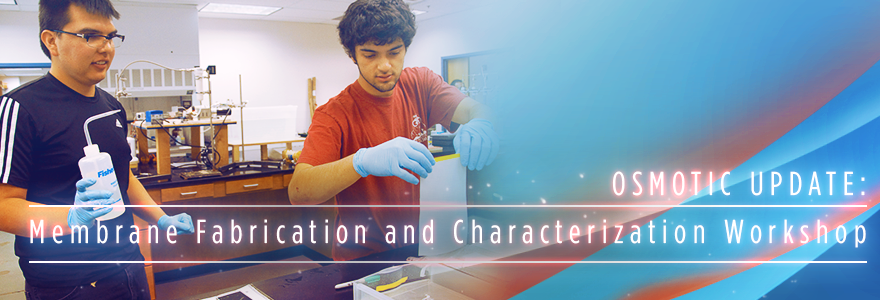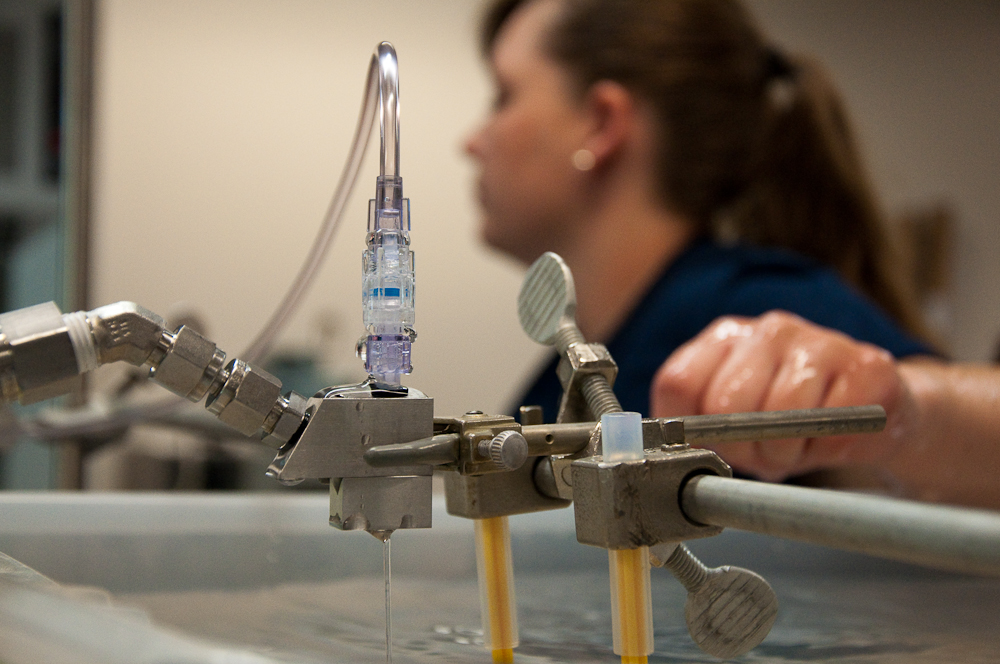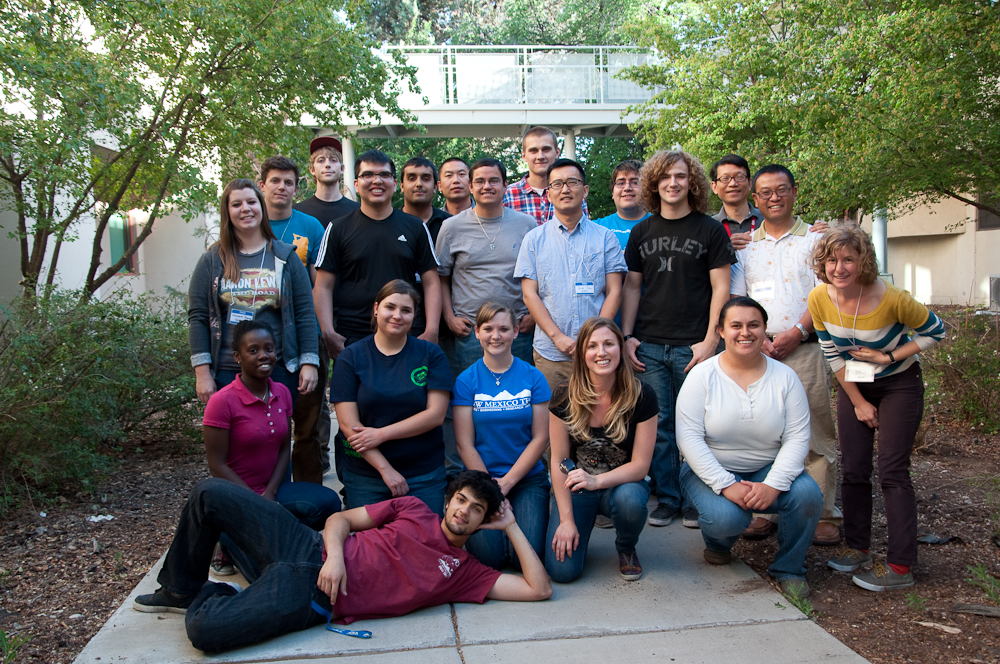NEWS
Membrane Fabrication and Characterization Workshop

Fifteen students and five faculty researchers from New Mexico Tech, New Mexico Highlands University, and Eastern New Mexico University congregated at the New Mexico Tech Environmental Engineering Laboratory, June 9 – 11 to learn the basics of membrane fabrication and characterization. The first in a series of technical workshops, this three-day intensive workshop was designed to establish and nurture a vibrant research infrastructure in New Mexico for osmotic power development.
 Membranes are a critical component of osmotic power development. The opportunity to teach students and faculty how to fabricate custom membranes tailored to specific applications is an important step towards expanding New Mexico’s competitive research capability. Future workshops will build on this membrane fabrication knowledge and focus on constructing membrane modules for the testing of Pressure-Retarded Osmosis (PRO) and Reverse Electrodialysis (RED), as well as developing skills with principal research tools such as LabVIEW.
Membranes are a critical component of osmotic power development. The opportunity to teach students and faculty how to fabricate custom membranes tailored to specific applications is an important step towards expanding New Mexico’s competitive research capability. Future workshops will build on this membrane fabrication knowledge and focus on constructing membrane modules for the testing of Pressure-Retarded Osmosis (PRO) and Reverse Electrodialysis (RED), as well as developing skills with principal research tools such as LabVIEW.
The first day of the workshop was spent reviewing membrane properties and the factors affecting these properties, including tensile strength, viscosity, contact angle, and morphology. Participants were then divided into faculty-led small groups learning how to cast thin-film membranes on glass panes with a doctor blade, which delegates precise thickness of the thin film. Experimentation was conducted with varying concentrations of cellulose acetate polymer solutions. These membranes were then characterized utilizing on-site tools, including a bench-top scanning electron microscope (SEM) to determine porosity and morphology, a high-powered camera and protractor software to determine contact angles that can be correlated to hydrophobicity. On the second day, the participants learned how to cast thin-film membranes on non-woven and mesh substrates building on the skills acquired. The substrate-embedded membranes were then tested to measure water flux, salt rejection, and other properties. During the last day of workshop, the attendees participated in the spinning and potting of hollow fiber membranes, which is the choice of membrane configuration for PRO.

In addition to conducting experiments and collecting data, students created daily power point presentations to share their processes and findings with the larger team. Faculty members asked challenging questions and instigated engaging discussion about research practice, problem solving, and technical choices. Participant surveys at the end of the workshop were overwhelmingly positive, with 100% of participants indicating that they would like to attend a data acquisition and process control workshop, in addition to future workshops about osmotic power development.
Thank you to New Mexico's Experimental Program to Stimulate Competitive Research (NM EPSCoR), the National Science Foundation (NSF) and industry partners for supporting our research on this exciting renewable energy source.

